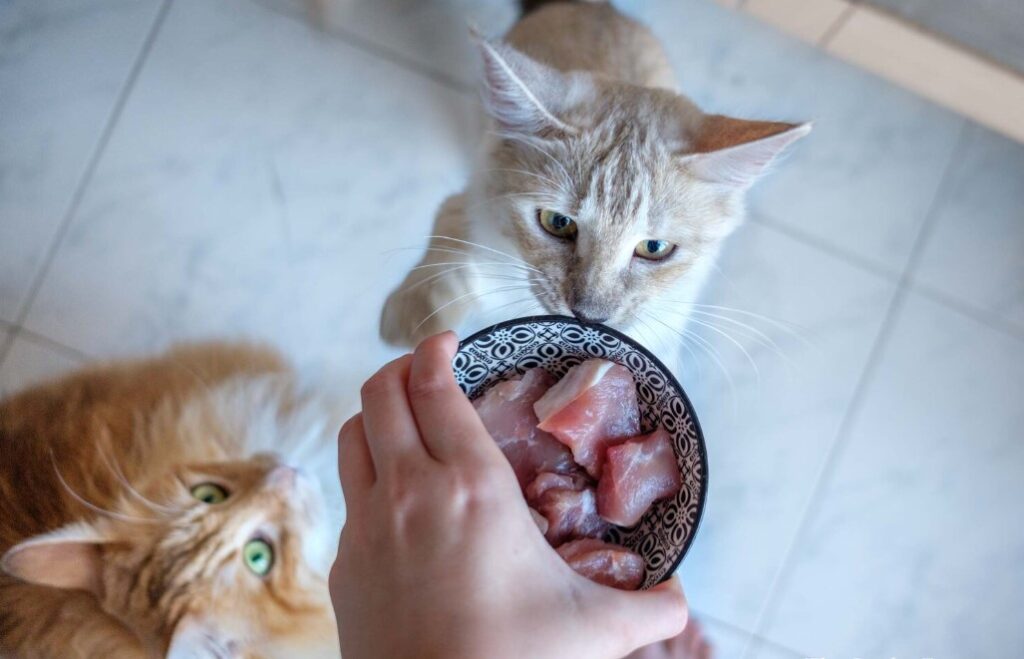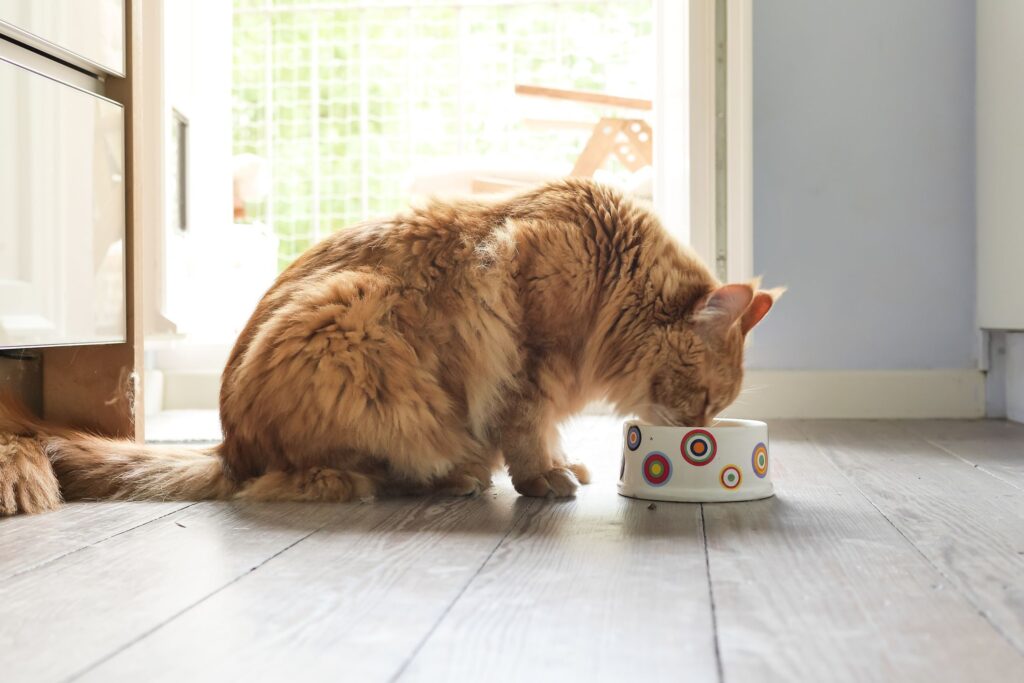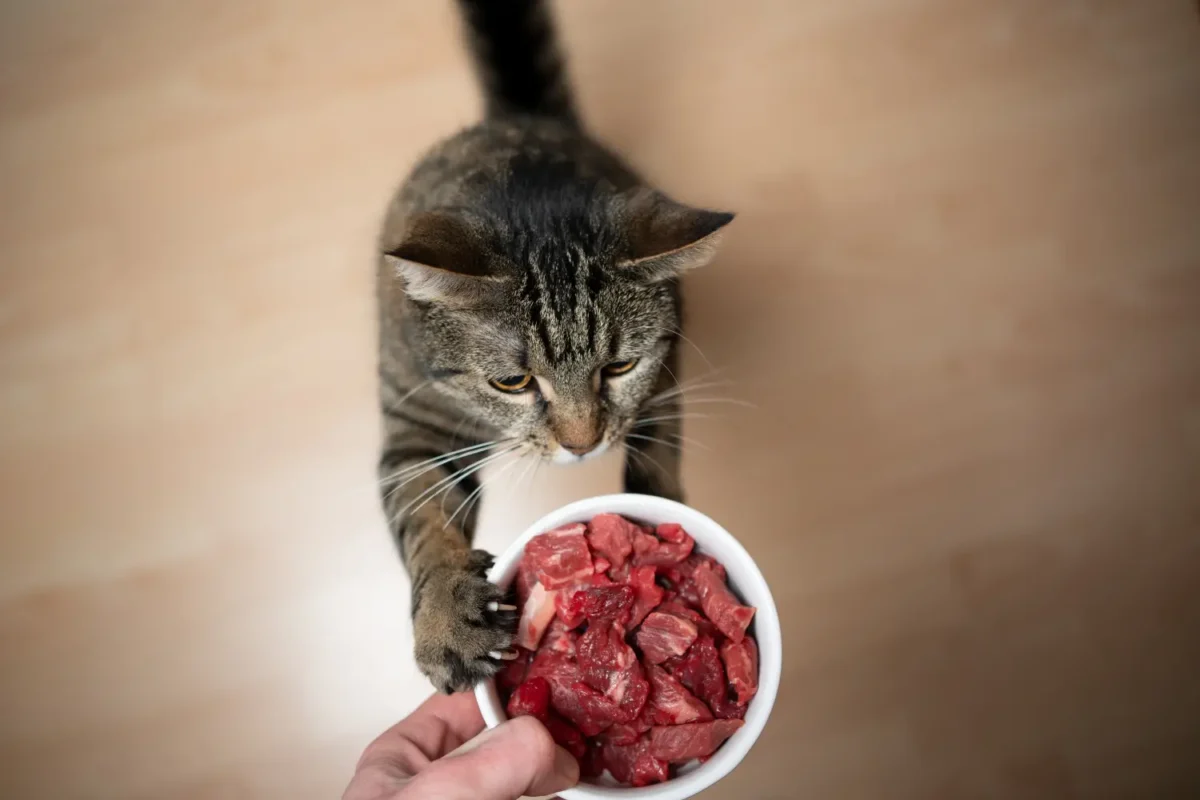If you’re a cat owner, your resolutions likely involve giving your furry friend an even better life this new year, and this significantly involves their diet. A cat’s diet can influence a cat’s coat, their energy levels, and digestive system. Numerous individuals who own cats have transitioned or are considering transitioning their feline companions to a raw food regimen.
The surge in popularity of raw pet food has played a significant role in its expansion, with projections indicating that the raw pet food market will exceed $195 billion by 2029, experiencing a compound annual growth rate (CAGR) of 5.2 percent from 2022 to 2029.
However, the myths circulating this diet make it challenging for cat owners to make informed decisions. This year, make it a goal to learn more and steer clear of the mayths and get to know the facts about a raw diet. While a raw diet may not be the ideal choice for every pet, if you’re considering it for your feline friend, learning the facts can do wonders. So, here’s some common cat food myths debunked to give you peace of mind and help you make informed decisions for your furry companions.
Myth #1 ─ Raw Meat Is Unsafe for Cats
Contrary to the idea that raw meat can foster harmful bacteria, it’s crucial to recognize the inherent strength of a cat’s digestive system. Cats are biologically adapted to consume raw meat, a characteristic of their evolution as obligate carnivores. The acidity in their stomachs is significantly higher than in humans, as vertebrate animals have pH between 1.5 and 2.5, acting as a robust defense against potential pathogens present in raw meat.
Myth #2 ─ Commercial Cat Food is Superior
While commercial cat food is a convenient option, assuming that all brands offer optimal nutrition is a common misconception. Some commercial foods may contain fillers and additives that may not align with your cat’s nutritional needs. Opting for a raw diet allows you to tailor your cat’s meals, ensuring a wholesome mix of proteins, fats, and essential nutrients, promoting their overall health.
Myth #3 ─ Raw Diets Cause Nutritional Imbalances

Source: thelittlecarnivore.com
The key to a successful raw diet lies in variety. A mix of different proteins, including muscle meat, organs, and bones, ensures a balanced nutritional intake. Regularly rotating meats and incorporating supplements as needed can help prevent any imbalances.
Myth #4 ─ Raw Diets Lack Essential Nutrients
A well-balanced raw cat food diet can provide all the necessary nutrients for your feline friend. By incorporating a variety of meats, bones, and organs, you can mimic the nutritional profile of their ancestral diet.
Additionally, supplements can be added to address any potential gaps in the diet. The key to finding the right raw food for your cat is choosing a reputable brand and exploring their recipes. A renowned company will be transparent about the ingredients in their recipe, ensuring that you can confirm if the recipe has the nutrients you’re seeking in cat food.
Myth #5 ─ Bones Are Dangerous for Cats
While it’s true that cooked bones can pose a threat due to their brittleness, raw bones are safe and beneficial for cats. Chewing on raw bones helps maintain dental health, strengthens jaw muscles, and provides a natural source of calcium.
Myth #6 ─ Raw Food Leads to Parasite Infestation
The freezing process used in preparing many raw cat food recipes can be effective in killing parasites and bacteria. Additionally, sourcing high-quality meats from reputable suppliers reduces the risk of contamination. Regular veterinary check-ups can also help catch and address any potential health issues promptly.
Myth #7 ─ Raw Feeding Is Expensive and Time-Consuming

Source: thesprucepets.com
Though it’s accurate that obtaining premium-quality ingredients may involve higher initial expenses, the potential long-term health advantages could surpass the associated costs. With proper planning and preparation, raw feeding can be convenient. Batch preparing meals and freezing them in portions can save time and make feeding raw more manageable.
Myth #8 ─ Cats Won’t Eat Raw Food
Cats are obligate carnivores, meaning their bodies are adapted to a diet primarily consisting of meat. Many cats readily accept raw food, especially if introduced gradually. Mixing small amounts of raw food with their regular diet and gradually increasing the proportion can help transition them to a raw diet.
Myth #9 ─ Raw Diets Lead to Aggressive Behavior in Cats
A common misunderstanding suggests that a raw diet could heighten a cat’s aggression. Nevertheless, factors like genetics, environment, and individual temperament significantly influence cat aggression. There is no scientific evidence substantiating the notion that a raw diet intrinsically triggers aggressive behavior in cats.
Myth #10 ─ Raw Feeding is Not Suitable for All Cats
Some believe that raw diets are only suitable for certain cats, such as those with specific health conditions. In reality, many cats, regardless of age or health status, can thrive on a well-balanced raw diet. It’s crucial to consult with your veterinarian to tailor the raw diet to your cat’s individual needs and health considerations.
Safely Switching to a Raw Diet ─ A Quick Guide

Source: millersbiofarm.com
Now that you have uncovered the facts, if switching your feline friend to a raw food diet is a part of your plan, it’s important to take a thoughtful and gradual approach to ensure a smooth shift without causing digestive upset. Here are some key steps to help you safely switch your feline friend to a raw diet.
Consult with Your Veterinarian
Before making any dietary changes, consult with your veterinarian. They can provide valuable insights into your cat’s specific nutritional requirements, offer guidance on balanced raw feeding, and address any concerns you may have.
Monitor Your Cat’s Response
Monitor your cat’s behavior, the consistency of its stool, and its general well-being carefully as you transition. If you observe any indications of digestive issues, like diarrhea or vomiting, consider slowing down the transition or seek guidance from your veterinarian.
Offer a Variety of Proteins
Ensure a balanced diet by incorporating a variety of proteins, including different types of meat, organs, and bones. This not only provides a diverse range of nutrients but also helps prevent dietary imbalances.
Consider Supplements

Source: dailypaws.com
Depending on your cat’s specific needs, your veterinarian may recommend supplements to ensure they receive all essential nutrients. Common supplements include taurine, omega-3 fatty acids, and vitamin E.
Maintain Hygiene
Raw feeding involves handling and preparing raw meat, so it’s crucial to maintain excellent hygiene. Wash your hands thoroughly after handling raw food, clean utensils and surfaces, and store raw ingredients safely to prevent contamination.
Regular Veterinary Check-ups
Schedule regular check-ups with your veterinarian to monitor your cat’s health and address any concerns. Regular veterinary visits are essential for maintaining your cat’s overall well-being, regardless of their diet.

























